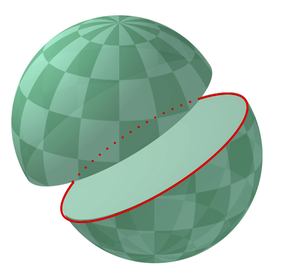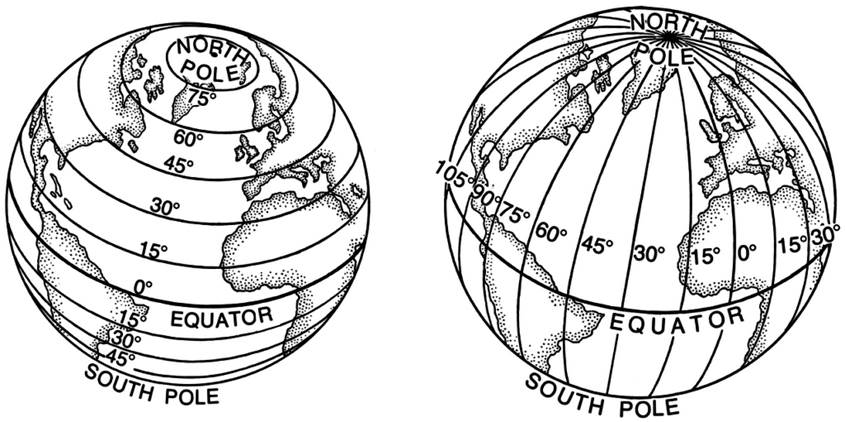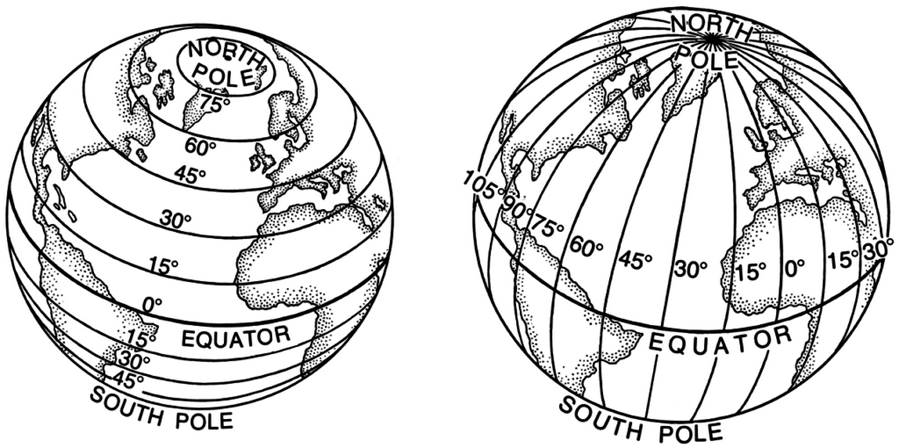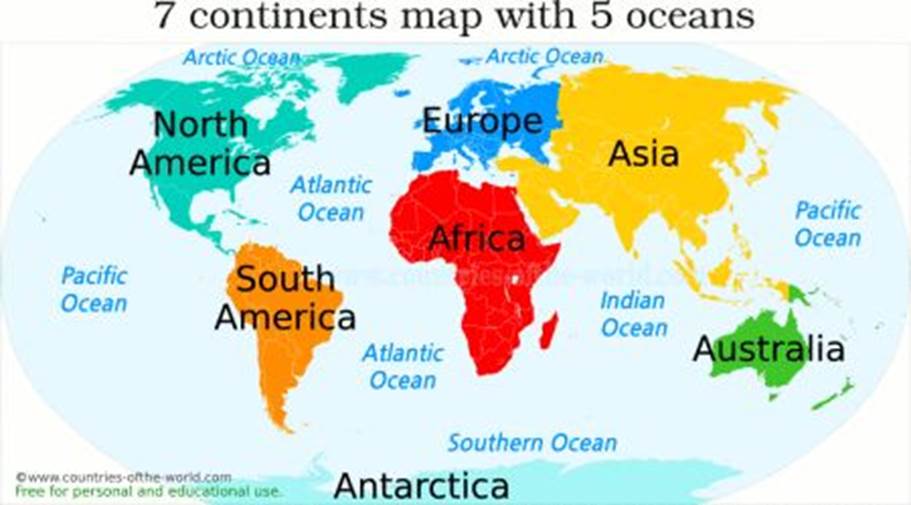Geography game for children online
Geography game for children online
Geographic Grid System

Geography is about spatial understanding, and it requires an accurate grid system to determine absolute and relative positions. The final position is the exact x and y coordinates on the earth. A relative position is the position of something close to other entities. For example, when you use GPS in a smartphone or car, such as Google Maps, you enter an absolute location. But when you start driving, the device will tell you to turn right or left relative to objects on the ground: "Turn left at exit 202" refers to the location of the exit. If you're giving directions to your residence, you'll almost always provide the appropriate place to assist them in figuring out how to get there.
Most of the earth's grid systems are based on the North Pole, South Pole, and the Equator locations. The poles are an imaginary line starting from the rotation axis of the earth. The equatorial plane is an imaginary horizontal line that cuts the earth into equal halves. This brings up the topic of big circles and small circles. Any circle that divides the globe into two similar circles is referred to be a great circle. On a sphere, it is also the biggest circle that can be drawn. The shortest distance between these two places is also the line linking any point along the great circle. The equator, all meridians, the line that divides the globe into day and night, known as the circle of illumination, and the ecliptic plane, which splits the earth into equal halves along the equator, are examples of large circles. A tiny circle divides the world into equal halves. All lines of latitude except the equator, the Tropic of Cancer, the Arctic Circle, and the Antarctic Circle are examples of tiny circles.
Latitude and longitude
Many people think that Latitude connects places to the earth, but that is not the case. Latitude is a measure of the angle north or south of the equator. Thus 30 degrees northwest means a point 30 degrees north of the equator. Length is also expressed in degrees, minutes, and seconds; rotating 360 degrees, one degree 60 minutes ('), one minute 60 seconds ("). When using Google Earth, the point of view uses this degree/minute / second Latitude is measured from zero degrees (equator) to 90 degrees north and south ( polarity). The lines that connect all areas in the same lines are called parallel lines because these lines are the same. The only line is the same for all other lines that are the same as the smaller ones.
• Equator, 0 degrees
• Tropic of Cancer, 23.5 degrees north
• Capricorn temperature, 23.5 degrees
• The Arctic Circle, 66.5 degrees north
• Antarctic Circle, 66.5 degrees south
• North Pole, 90 degrees north (slightly longer)
• Antarctica, 90 degrees South (unlimited stadium)
Latitude is sometimes described as a region. Some of these particular areas are:
The low-frequency range between the equator and 30 degrees north
• Middle distance — between 30 and 60 degrees north
• High-altitude distances exceed 60 degrees north and 60 degrees south
• Equator — within a few degrees of the equator
• Tropical-tropical areas (between 23.5 degrees north and 23.5 degrees south
• Tropical temperatures are lightly polished, usually around 25-30 degrees north
• Polar region — within a few degrees of the North Pole or the South Pole
Length is the corner measurement east and west of the first Meridian (right picture). Latitude longitude is measured in degrees, minutes, and seconds. The line connecting the longitude is called the Meridian. But unlike parallel lines, meridians are not identical with each other. Instead, they are farther away from each other at the equator with the combination of direct poles. The distant problem is that there is no biological basis like an equator to represent Latitude. Countries have used their "first meridian" for more than a century, which is a trade problem. But in 1883, Washington convened an international conference to identify the world's largest Meridian. After weeks of controversy, the Royal Observatory in Greenwich, England, became the Greenwich Meridian, or the so-called Prime Meridian of the World. So today, longitude starts from the first Meridian and measures east and west of the line.
One hundred eighty degrees of the Pacific Prime Meridian is the world's most extensive line. This line confirms where the new day on earth begins. As a result, the global date change line is not straightforward but follows international boundaries, so the world is not divided into two days (we think the hourly hour is painful). If you look at the map below, the global line is on the black line to the right. Please note the format provided to ensure that the country is not divided by a worldwide line.

Time Zones
If you go back to the map above, you can see the various image sections. Since the earth is rotating 360 degrees in 24 hours, the earth rotates 15 degrees per hour, thus forming 24 time zones. In the ideal world, each time shifts in the line of longitude 15 degrees (7.5 degrees from the center of the long-distance on each side). However, due to political limitations, the distribution of time zones is not very good, and they vary widely in width and width. Greenwich, England, was chosen as the starting point for a global era during the 19th century. The fact is that Britain was the most powerful at that time in terms of military and economic power. Hence the Meridian that passes through Greenwich becomes a zero degree or prime Meridian. Since the earth rotates about the first Meridian, the area east of the new Meridian means time and west of the Meridian behind Greenwich Mean Time in England. Finally, when you combine lines that match the meridians, you can have a grid system that allows you to know where the world is.
Major U.S. cities
In terms of land, the United States is the fourth largest country globally, and only Russia, Canada, and China remain. It covers an area of 3,796,742 square miles and has a population of approximately 327 million. The capital of the United States is Washington, DC, and New York City is the largest city. The United States has 50 federal and federal districts, including 5 autonomous territories, with many assets.
The United States is a global player in trade and politics. It is home to some of the most prestigious universities globally, such as Harvard University, Stanford University, Princeton University, Columbia University, etc. The country is a popular tourist destination worldwide, and many tourists travel from sea to sea.

